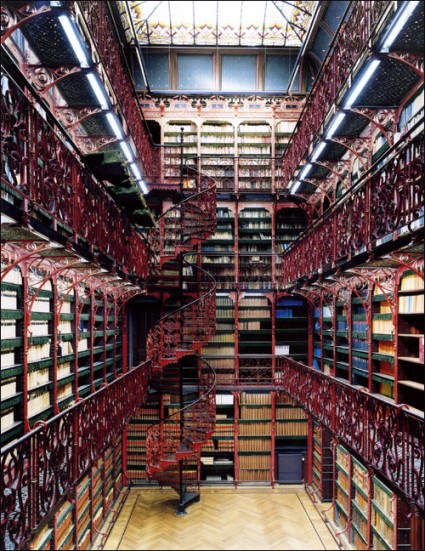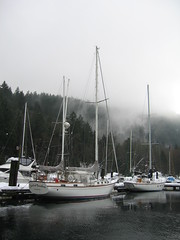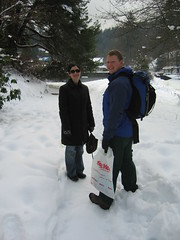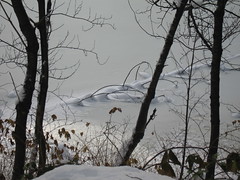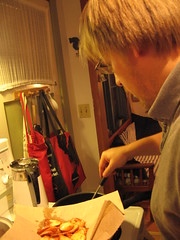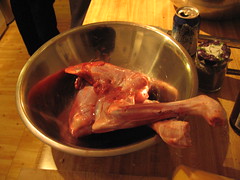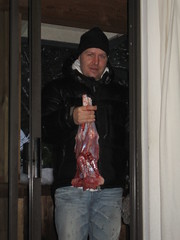A fantastic blog post of hot library photos.
Page 53 of 123
Jane Jacobs is perhaps best known for The Death and Life of Great American Cities (1961), which is where her arguments and observations on economies first came to light for the masses. The Nature of Economies is an extension of Jacobs’ assertion that economies mimic natural systems in the way they grow, and, if we are clever human beings, we’ll understand that in order to understand economies, we need to understand ecology. Ecology being the basic premise of the book, basically that human beings exist wholly within nature as part of natural order in every respect.
Early on in the text, Jacobs sets up this relationship by illustrating that economy is derived from two Greek roots: oiko meaning “house” and nomy meaning “management.” House management. Ecology comes from the same root for “house,” plus the root logy for “logic” or “knowledge.” Ecology then literally means “house knowledge.” Ecology then is the economy of nature. (p. 10)
So what have we learned from nature? What does nature tell us about economies?
In the foreword, Jacobs establishes the above literary tradition of didactic dialogue. Her approach is to use imaginary characters and didactic dialogue so readers understand complex arguments as they develop between the characters. In this way, we, the readers, are part of the process, perhaps even part of the ecology of the text.
The characters are inconsequential but their arguments are worth noting.
Differentiation Emerging from Generality (p. 16)
The nature of development, either in nature or economies, is that differentiations emerge from generalities. For example, the solar system at one time emerged as a cloud of matter, a generality. Differentiations emerged, including the sun, planets and their moons. Once Earth emerged as a differentiation, it became a new generality from which further differentiations could emerge. Cars emerged and then sedans and hatchbacks and so on.
Differentiations Become Generalities from which Further Differentiations Emerge (p. 17)
“Development is an open-ended process, which creates complexity and diversity, because multiplied generalities are sources of multiplied differentiations, some occurring simultaneously in parallel, others in successions.” In other words, repetition creates diversity. For example, “various kinds of mammalian feet were differentiated from unspecialized feet of early mammals, which had five generalized toes with claws, apparently much like the unspecialized feet of modern rats.” Differentiations emerged such as hooves, wings, flippers, paws, and hands.
This all seems elementary unless you consider that as recent as Aristotle, we believed that a human embryo began as a tiny infant rather than as a combination of cells. Or that there are those among us to vehemently believe that the world and its creatures began as stated in Genesis.
In truth, there are many economists who believe in economies of scale but Jacobs contends that economic advantage is based on much more than scale.
Development Depends on Co-Development (p. 19)
Development is a web of interdependent co-developments. Planets need the sun to hold their orbits, a delta needs both water and silt, and economies need trading and self-refueling. Trade is differentiated from sharing and seizing. Trade furthers economic differentiations in transportation, communication, finance, and markets. How? Because trade relies on telephones, printing, transportation, these are co-developments. Nothing develops in isolation.
For examples, we look to Detroit (p. 79).
“Detroit’s economy had actually been excellent at generating exports and replacing wide ranges and many chains of imports until its most successful export work, automobile manufacturing, came to dominate the city’s economy. By the mid-1920s, the city’s versatility had gone in reverse.”
Independent local suppliers to the car industry disappeared as car manufacturers started filling their own supply needs internally. This meant that independent suppliers, who were also developing nonautomotive sidelines disappeared. The economy of Detroit has no way to refuel itself. It’s the snake eating its tail.
The once-admired industrial integration and efficiency of the auto industry is now reeling in economic stagnation. The co-developments for growth are missing. But instead of a bifurcation the auto industry is looking for subsidies.
Bifurcation means fork, like a fork in the road. When we recognize the system’s instabilities are so serious that continuing to operate on this path is foolish, we make a radical change, we take a fork in the road, we bifurcate. For example, we build subways when surface streets can no longer accommodate traffic, we build elevators when buildings reach a certain height, and a long time ago we domesticated animals and stopped moving around so much. But bifurcations have complex consequences that are usually not known at the time of their adoption. We chose cars over horses, which got rid of feces in the streets but created carbon dioxide in the air.
On the one hand, we don’t know the consequences of bifurcations, on the other, we know that in order for bifurcations to be successful, they have to come at the right time. The alternatives needs to be waiting in the wings otherwise it’s too late for the system to correct itself with the bifurcation. It will fail. For example let’s support wind energy, solar energy, and geothermal energy so that when fossil fuels are done, or too expensive or too great a load on the system, the alternatives are healthy, thriving industries ready to increase capacity.
So how do we know when we need change and development? Through the effective response to feedback, “information regarding a system that the system both reports and responds to” (p. 95). Still we must report and respond to the right data. Canadians overfished the Grand Banks by allowing fish stocks to decrease and fishing trawlers and net sizes to increase, and by subsidizing that practice. It was an illogical response to economic demands in the 1960s. But we continue these vicious circles by twinning the Port Mann Bridge, for example. During rush hours the roads become congested. The information, or feedback, we report and respond to comes in the form of traffic jams and longer travel times. Is the logical response to widen streets and build more roads? Or is it that we depend too heavily on cars and trucks and instead should look to alternative means for moving people and goods? Or should we be rethinking of our cities, which currently separate everyday conveniences from home and home from work? (p. 100)
What economic concept do we still learn in first year? It has to do with supply and demand and the question of whether supply generates demand or demand generates supply. Jacobs suggests we look at how systems self-refuel, at the patterns of development and co-development, at positive feedback loops that allow us to choose bifurcations at the right time to correct instabilities in the system.
Is there hope? Of course.
Jacobs expounds the traits that have managed to prevent us from destroying the world to date. For one, we should celebrate our capacity for aesthetic appreciation. Our admiration for nature is documented as far back as human history is recorded, cave paintings of sun, animals, plants, and oceans. Let’s tap into that. Two, fear of retribution for transgressions is healthy: whether you’re praying to the rain god or following Stephan Dion’s carbon plan, fear and awe of powers beyond our control help us understand the significance of our habitat on our daily lives. And three, relish language for it is our ability to warn and persuade as elegantly and forcibly as Jacobs does that could save us all.
As one of the characters notes, ”Working along with natural principles of development, expansion, sustainability and correction, people can create economies that are more reliably prosperous than those we have now and that are also more harmonious with the rest of nature.”
The Nature of Economies by Jane Jacob is published by Random House Canada.
And here’s a much more critical review of the book and a sample of the first chapter from NYTimes.
Disclaimer: If you don’t like the idea of butchering deer, don’t read this post.
Boris and Rachael had the troops over to Bowen Island for holiday cheer and frozen deer. The deer was a bit of an afterthought, as in, the deer froze because it was small and the weather was unforgiving; we ate the deer because James knows how to butcher deer and we know how to eat it.
Bowen Island under snow.
No sailing today.
WTF say the wildlife.
On the path home.
Frozen lagoon.
A team of techies managed to get the old Super 8 player going so we could watch Boris run around in nappies with dead chickens.
A window sill of libations.
The eating of meat.
Venison loin steaks cut very small and served with sweet potato chips and garlic mayo. (Ok, I can’t tell you any more or I’ll have to go be alone.)
Butcher, the baker, the candlestick maker. Actually, it was more like rub-a-dub-dub, the deer’s in the tub, bits of it all in easy to cook pieces.
Homemade chips.
Ok, I know you want to see the deer. Front legs. Braised.
Vegetarian friends: here are the artichokes. Amazing.
The love seat seats 3, even with full bellies. This is a good house.
Because you need to see how the deer came down from the hill.
Thank you Rachael and Boris.
Mele Kalikimaka is a wise way to say Merry Christmas to you.
Alexis and Melanie have started Roughing It In The Books. I love the tagline, “someone always dies in the end.”
Roughing It In The Books is what I love best about the internet. Here are two women who love books, reading, writing, publishing and are having an online conversation about it that we can all follow and/or join.
The site focus is on Canadian Literature.
Quote: I don’t know anyone who reads the classics anymore, not the Canadian Lit. classics anyway. Ask Canadians about them and they roll their eyes and mutter something about Roughing it in the Bush, which, unless you have actually taken a University level Canadian Lit. course you probably haven’t read. Susanna Moodie’s whiney tale of life in the New Country is the quintessential Canadian novel people love to hate. Ask a non-Canadian and their reaction would probably be, “Canadian what?”
So true!
When you talk to people who haven’t studied Canadian Literature, they really have no idea that we live in a land full of amazing writers. And the reference to Roughing It In The Bush by Susanna Moodie is another clever inside joke. Even those of us to studied Canadian Lit. were steered to Sinclair Ross (1908-1996), Ernest Buckler (1908, 1984) and Susanna Moodie (1803-1884). All great authors for many reasons, but they just don’t stir up the same connotations as their English or American counterparts. There’s even something sexy and unknown about Australian Lit. or Caribbean Lit.
I’m enjoying the current updates on the Canada Reads Challenge.
The view from Canada Place.
Drinking Sahleb with Ayala and friends.
Finding the car.
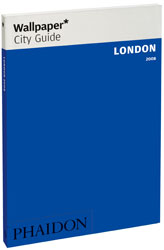
Wallpaper* City Guide: London 2008
Phaidon has a great series of city guides. I used the Cairo one on my trip and it was fantastic for restaurant recommendations and for giving a different perspective on the architecture, art and culture of the place.
I highly recommend these as supplemental guides. Not a great replacement for your full-blown guide book, but definitely necessary reading in advance of the trip, good for nightlife planning, and perfect as small, pocket-sized gems that you can easily cart around while on tour.
A full range of stars for these city guides.

Fugitives by Suzanne Jacob is a novel translated by Sheila Fischman, who must be the best French-English translator in Canada.
Suzanne Jacob is a major voice in Quebec fiction and I wanted to read her latest (the 7th) novel. Fugitives is the story of four generations of women who are trying to escape the madness of their families. These are children who are taken advantage of by adults, children finding their way sexually, children finding their place in the world.
The chapters switch between different points of view and although it is evokative and mysterious, I didn’t quite get into this story. It’s a novel of the mind, in this case the minds of four women.
A worthwhile read, but I did have to stick with it.
Fugitives by Suzanne Jacob
translated by Sheila Fischman
published by Thomas Allen Publishers
